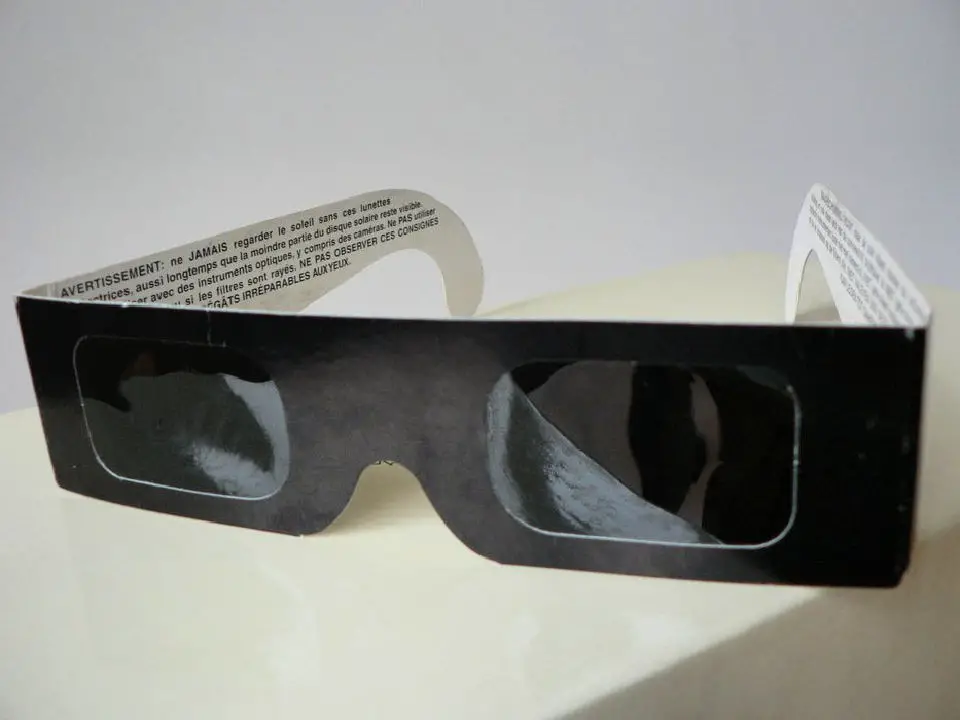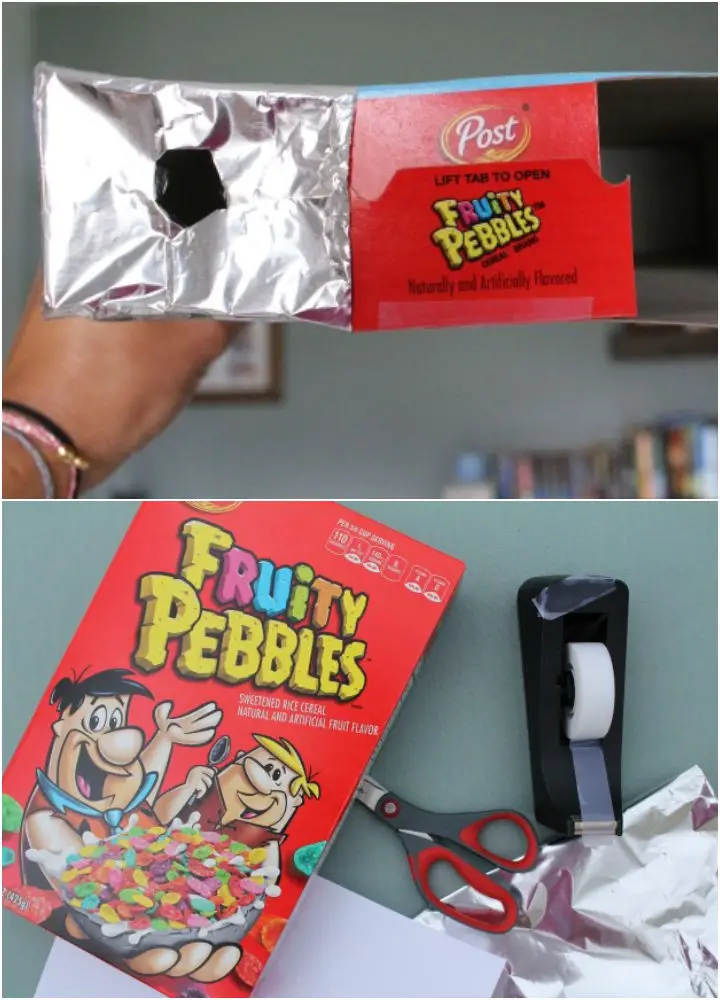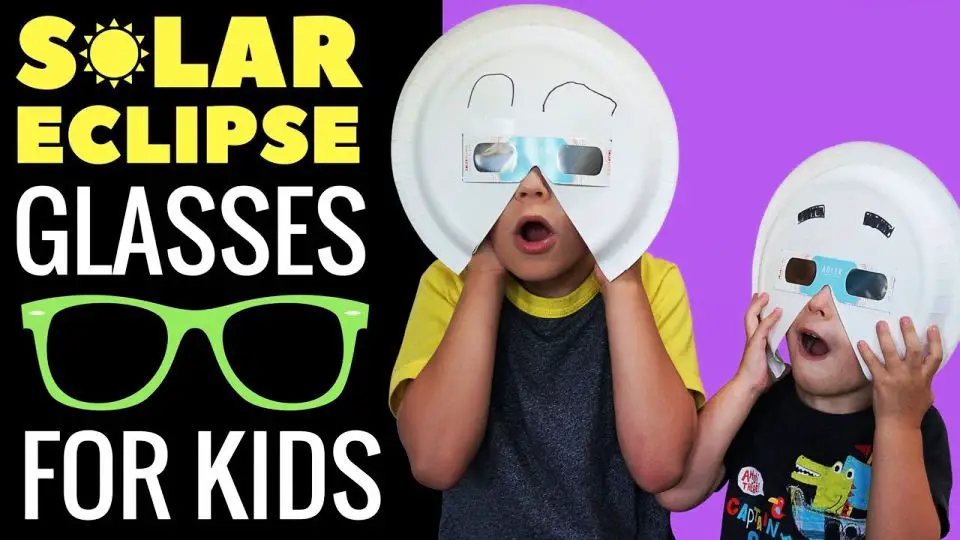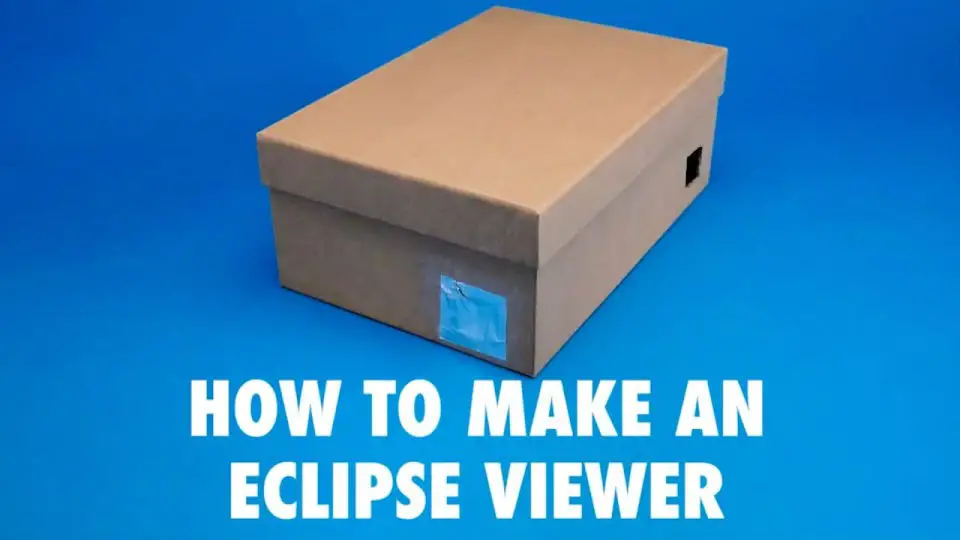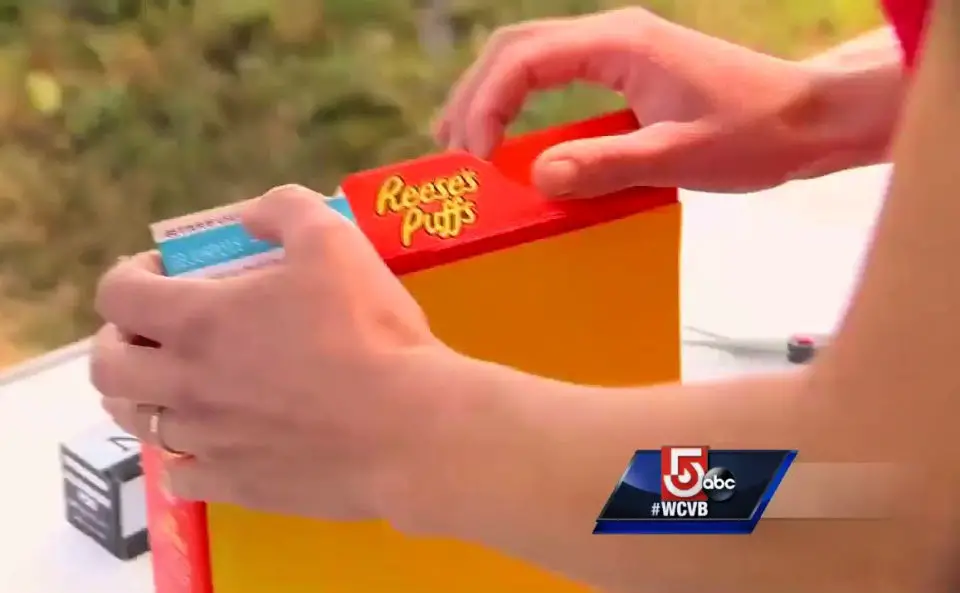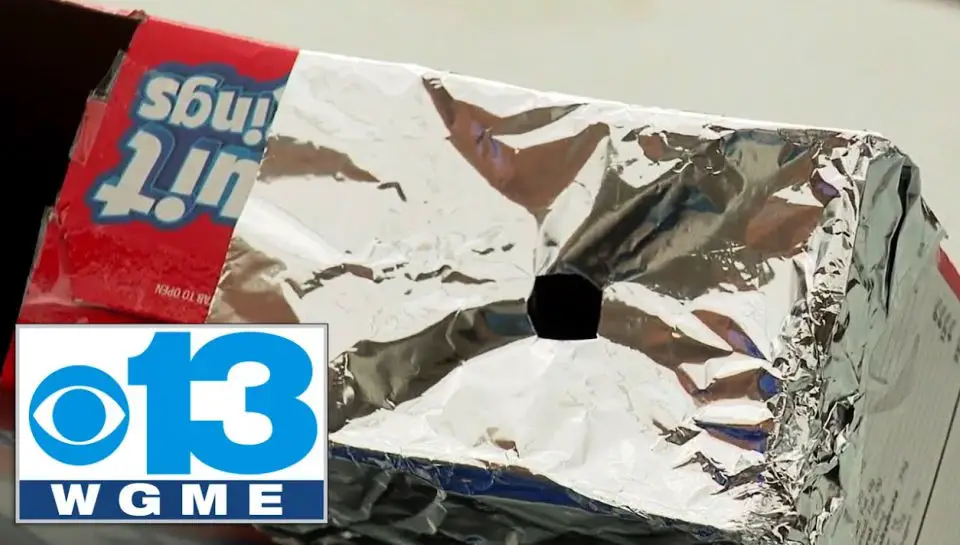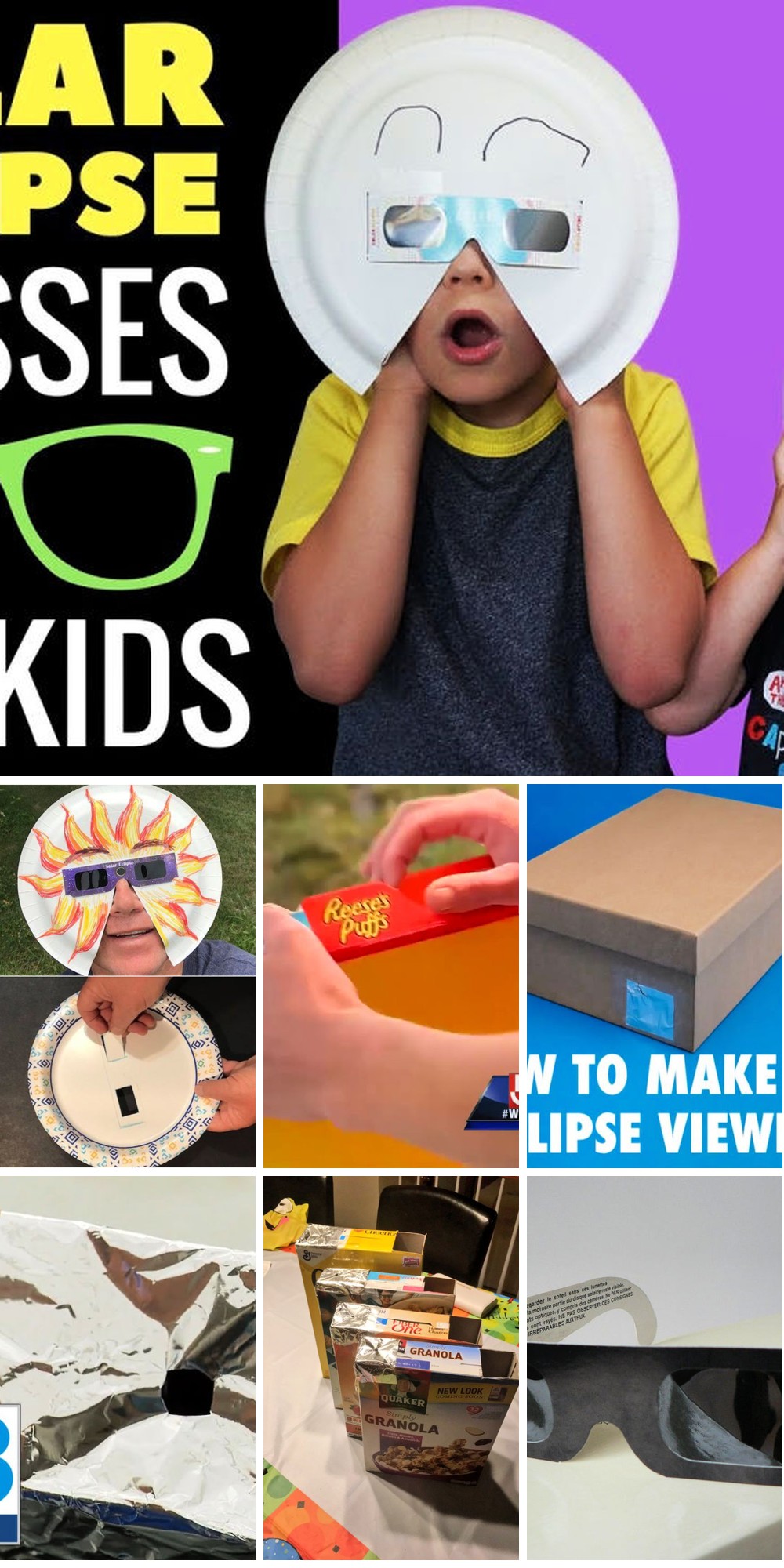
Witnessing a solar eclipse is an awe-inspiring experience, but it’s essential to prioritize eye safety above all else. To ensure a memorable and safe viewing experience, we’ll guide you through the process of creating your own DIY solar eclipse glasses. This comprehensive overview covers total, partial, and annular solar eclipses, highlighting the significance of proper protection for your eyes. We’ll delve into the world of celestial events, exploring the importance of using correct solar filters and outlining safety precautions to safeguard your vision. Whether you’re crafting these glasses for educational purposes or as a fun DIY project, our instructions are designed to be straightforward and enjoyable. Let’s begin by selecting the right materials and tools for constructing your solar eclipse glasses.
Understanding Solar Eclipses
When the moon aligns with the Earth and sun to block the sun’s direct light, a rare and awe-inspiring phenomenon occurs – a solar eclipse. This celestial event is characterized by the moon’s passage between our planet and the sun, casting a temporary shadow on the Earth. Solar eclipses come in three distinct forms: total, partial, and annular, each with its unique characteristics.
Total Solar Eclipse
As the celestial bodies align, a total solar eclipse unfolds with the moon eclipsing the sun’s radiant light, plunging our world into an otherworldly twilight. This rare phenomenon, only observable from a precise window on Earth, transforms day into an eerie night for a fleeting moment, casting an indelible mark on human experience.
Partial Solar Eclipse
When a partial solar eclipse occurs, the moon only partially blocks the sun’s light, resulting in an unusual and striking visual effect. From the perspective of observers within the affected region, the sun appears to be partially obscured by a dark silhouette, as if a shadow has taken a chunk out of its otherwise radiant face.
Annular Solar Eclipse
A less common type of solar eclipse is an annular event, where the moon’s distance from Earth prevents it from blocking the entire sun. Instead, a ring of light – often dubbed the ‘ring of fire’ due to its fiery appearance – remains visible around the moon.
Viewing Solar Eclipses Safely
When experiencing a rare and awe-inspiring event like a solar eclipse, it’s crucial to prioritize eye safety to avoid any potential long-term damage. The intense sunlight during this phenomenon can cause significant harm to the retina, potentially leading to permanent vision loss if not properly protected. To ensure safe viewing, it’s vital to utilize specialized solar filters within solar eclipse glasses, designed specifically to shield your eyes from the sun’s harmful rays.
Why Solar Eclipse Glasses?
When it comes to viewing a solar eclipse, having the right gear is crucial for ensuring your eye health. Solar eclipse glasses are specifically designed to filter out most of the sun’s harmful ultraviolet (UV) and X-ray radiation, allowing you to witness this celestial phenomenon without putting your eyes at risk. Unlike regular sunglasses, even very dark ones, which can still allow a significant amount of UV light to pass through, solar eclipse glasses provide the necessary protection needed to view the sun safely during an eclipse. As such, it’s essential to never look directly at the sun, even during an eclipse, without proper eye protection. By taking the necessary precautions and staying informed about solar eclipses, you can enjoy this awe-inspiring event while safeguarding your vision.
Materials and Tools for Solar Eclipse Glasses
To craft solar eclipse glasses that prioritize both safety and efficacy, you’ll need to gather the right materials and tools. The following list outlines the essential components for your DIY project:
Essential Materials
When it comes to building a solar viewing apparatus, three key components stand out as essential. First, ensure that your solar filter is ISO-certified and made from high-quality film or Mylar specifically designed for solar observation. This will provide optimal protection for your eyes while allowing you to safely gaze at the sun.Next, you’ll need a sturdy cardboard frame to serve as the base of your glasses. Opt for thick cardboard that can hold its shape but remains light enough for comfortable wear. To simplify the process, consider using pre-made templates to guide your cutting and ensure a precise fit.
Tools You’ll Need
To streamline your DIY project, consider utilizing three essential tools: sharp scissors, adhesive, and a marker. The scissors will efficiently cut through cardboard, making it simpler to craft a sturdy base for your solar filter. Next, use glue or double-sided tape as your adhesive of choice to firmly secure the solar filter onto the cardboard frame. Finally, a marker proves invaluable for tracing the template onto the cardboard, ensuring accurate placement and a professional-looking finish.
Assembly Highlights
To create your solar eclipse viewing glasses, begin by carefully cutting out the cardboard frame using the template as a guide. Make sure to align the eye holes with the size of the solar filter pieces to ensure a snug fit. Next, secure the solar filter within the frame, ensuring that there are no gaps or tears for optimal protection. For added comfort, consider adding extra cardboard strips or foam to create a comfortable nose bridge and arm rest. With these precautions in place, you can confidently prioritize filter quality for eye safety and enjoy the thrill of witnessing the solar spectacle.
How To Make Solar Eclipse Glasses – Step By Step
Witnessing a solar eclipse is an unforgettable experience, but it’s crucial to prioritize eye safety as direct sunlight can cause significant damage. To ensure a safe and enjoyable viewing experience, the use of specialized protection like solar eclipse glasses is essential. For those who prefer a DIY approach or are short on time, crafting your own solar eclipse glasses can be a fun and enlightening project. This guide provides a step-by-step tutorial on how to create your very own solar eclipse glasses safely and efficiently.
What You’ll Need:
To create a unique and effective DIY insect trap, you’ll need a few basic materials. Start by gathering 2 pieces of white cardstock paper, some aluminum foil, scissors, tape, and either a pin or needle.
Step 1: Prepare Your Paper
To create the framework for your DIY solar eclipse glasses, start by taking two pieces of white cardstock paper and cutting out a rectangular shape from the center of one piece, leaving approximately one inch of paper bordering the edges to form a frame.
Step 2: Cover The Hole With Foil
To effectively block out sunlight and maintain a consistent temperature within your paper frame, first cut a piece of aluminum foil slightly larger than the existing hole. Secure the foil over the opening using tape, ensuring a wrinkle-free and tear-free installation. This carefully positioned foil serves as a high-quality filter, adeptly diminishing the sun’s radiant energy that might otherwise disrupt your experiment’s conditions.
Step 3: Make Your Viewing Hole
To safely view the solar eclipse, begin by creating a precise pinhole in the centre of a piece of aluminum foil. This tiny opening serves as the aperture through which you’ll be observing the eclipse, providing a controlled amount of sunlight that’s gentle on your eyes.
Step 4: Assemble Your Glasses
To further secure your DIY eclipse glasses, take the second piece of cardstock and firmly adhere it to the rear of the frame using a reliable adhesive or fastening method. This additional layer not only adds structural integrity but also safeguards against any potential light breaches that might compromise the overall effectiveness of your makeshift solar viewers.
Step 5: Test Your Glasses
Prior to donning your eclipse-viewing glasses, it’s crucial to conduct a thorough quality control check. Hold the pinhole device up to a bright light source – not the sun – and adjust the gap between the glasses and your peepers until you achieve an optimal focal point. If the illumination appears too vibrant or if you notice multiple points of light, inspect the foil for any tears or additional holes and take corrective action to seal these imperfections.
How To Use
To maximize the viewing experience of your DIY solar eclipse glasses, stand with your back to the sun and hold the glasses up to your eyes. Look through the pinhole while moving your head slightly until you catch the sun’s image on the opposite side of the cardstock with the foil. As a reminder, it is crucial to avoid gazing directly at the sun without proper eye protection, including sunglasses or unfiltered cameras/devices.
Video Tutorial
To gain a deeper comprehension of the solar eclipse glasses-making process, I recommend supplementing this written guide with a step-by-step visual tutorial available on YouTube. The video not only complements the written instructions but also enhances your understanding by visually demonstrating each stage in a clear and intuitive manner. By following these straightforward steps, you’ll be able to safely appreciate the awe-inspiring spectacle of a solar eclipse while protecting your eye health.
Safety Precautions for Solar Eclipse Viewing
As you prepare for the rare spectacle of a solar eclipse, safety becomes the paramount concern. It’s crucial to grasp the potential hazards and take calculated measures to safeguard your vision, ensuring an unforgettable experience without compromising on eye health.
The Risks of Direct Sun Viewing
Permanent vision loss is a frightening consequence of gazing at the sun without proper protection. Solar retinopathy, a type of eye damage, can occur when the retina, devoid of pain receptors, is exposed to harmful ultraviolet rays. The lack of sensation in the retina means that the damage may not be felt until it’s too late, making it essential to take precautions when enjoying the sun.
Using the Right Solar Filters
When it comes to solar viewing, a crucial component is the solar filter. Its purpose is to safeguard your eyes by blocking out not only ultraviolet (UV) radiation but also visible and infrared light. To ensure maximum protection and compliance with industry standards, look for filters that meet the rigorous ISO 12312-2 international safety standard. This certification guarantees the filter’s ability to effectively shield your vision from potentially hazardous light wavelengths, allowing you to enjoy the solar viewing experience without compromising your eye health.
Unacceptable Substitutes
When it comes to protecting your eyes from the sun’s intense rays, it’s crucial to avoid using substitutes that may seem like a quick fix but ultimately put you at risk of eye damage. Regular sunglasses, smoked glass, X-ray film, and CDs/DVDs are not suitable alternatives to a proper solar filter. These materials are unable to provide adequate protection against eye harm.
Inspecting Your Solar Eclipse Glasses
When it comes to donning solar eclipse glasses, it’s crucial to conduct a thorough inspection beforehand. Start by carefully examining the frames for any signs of damage, including scratches, punctures, or other forms of wear and tear. If you detect even the slightest imperfection, it’s essential to err on the side of caution and dispose of the glasses immediately to ensure your safety during the eclipse.
Supervising Children
When it comes to experiencing the awe-inspiring spectacle of a solar eclipse, safety should always be top of mind. To ensure a memorable and risk-free experience for children, make sure they’re supervised while using solar eclipse glasses. This is crucial in teaching them the importance of never gazing directly at the sun. By taking these necessary precautions, you can revel in the wonder of a solar eclipse without compromising your vision’s integrity. Ultimately, when it comes to solar eclipses, there’s no substitute for proper eye protection – prioritize safety and bask in the glory of this celestial phenomenon!
Testing Your Solar Eclipse Glasses
To guarantee a safe and enjoyable viewing experience during the solar event, it’s essential to thoroughly inspect your solar eclipse glasses beforehand. To do this, follow these steps:
Inspect for Damage
Before putting on your glasses, perform a thorough visual inspection to identify any signs of wear and tear. Check for even the smallest imperfections such as micro-scratches, pinpricks, or tears in the lens or frame. If you notice any damage, refrain from using the glasses until they can be properly repaired or replaced.
The Shadow Test
To inspect your glasses for scratches or imperfections, start by positioning yourself in a well-lit area with good visibility. Next, hold the lenses out at arm’s length and focus on a bright light source, such as a bulb. The ideal scenario is that only a faint outline of the bulb should be visible through the filter. This simple test allows you to quickly assess the clarity and quality of your glasses.
The Sun Test
Stand outside with your back to the sun, ensuring direct sunlight falls onto your skin. Position the glasses over your eyes, blocking out any stray light. As you gaze up at the sky, the sun’s rays will filter through the lenses, casting a warm, orange glow before your eyes.
What to Expect
When checking the suitability of your solar eclipse glasses, start by ensuring the sun appears dim and orange through them. If you can see other objects like ordinary household lights or if the sun seems too bright, it’s likely that the glasses don’t provide adequate protection for your eyes. To verify the safety of your gear, conduct a series of simple tests. By doing so, you’ll be able to confidently use your solar eclipse glasses, knowing they’re shielding your eyes from potentially harmful UV rays. Above all, prioritizing eye safety is crucial when witnessing this rare celestial event. With the assurance that your vision is protected, you can fully immerse yourself in the experience and enjoy the spectacle with peace of mind.
Maintaining Your Solar Eclipse Glasses
To guarantee the continued safety and efficacy of your solar eclipse glasses, it’s essential to maintain them properly. A well-cared-for pair will be ready to provide optimal protection during subsequent solar events. To achieve this, start by thoroughly cleaning your glasses after each use. This will prevent any dirt or debris from accumulating and potentially compromising their ability to filter out harmful UV rays.
Next, store your solar eclipse glasses in a protective case or pouch when not in use. This will help shield them from scratches, cracks, and other forms of damage that could render them unusable.
It’s also important to inspect your glasses regularly for any signs of wear and tear. Check for scratches, cracks, or fading, and address any issues you find as soon as possible to prevent them from becoming more serious problems.
Storage
When storing your eyeglasses, prioritize a location that’s characterized by a consistent moderate temperature and low humidity levels. Avoid exposing them to direct sunlight, as it can cause degradation of the solar filters over time. A dark drawer or an opaque paper envelope can be effective in shielding your glasses from any potential damage caused by light.
Handling
When handling your glasses, exercise caution to ensure they remain in optimal condition. To maintain their functionality, refrain from folding or scratching the lenses, as these actions can negatively impact their performance.
Cleaning
When dealing with dusty or dirty glasses, start by gently blowing away any loose debris. If some stubborn grime remains, you can use a soft, slightly damp cloth to delicately wipe down the lenses. It’s essential to avoid using strong cleaning products that could potentially damage your glasses.
Inspection Before Use
Thoroughly inspect your glasses prior to each usage, taking note of any visible signs of wear and tear. If you detect even minor damage, consider replacing them altogether, as this can significantly impact their overall performance and functionality.
Longevity
When properly cared for, your solar eclipse glasses have the potential to last for several years without compromising their safety. Nonetheless, if there’s ever uncertainty surrounding their integrity, it’s always best to replace them with a new pair. To ensure your glasses remain in top condition and ready for the next spectacular solar event, simply follow these straightforward maintenance tips. With proper care, you’ll be able to bask in the wonders of the cosmos while prioritizing your safety.
Photographing the Solar Eclipse
Eclipse Photography: A Rewarding Experience with Safety and Effectiveness in Mind
As the moon’s shadow falls upon the earth, photographers are drawn to capture the celestial phenomenon of a solar eclipse. While the experience can be thrilling, it’s essential to prioritize safety and technical aspects to ensure successful results.
To start, it’s crucial to invest in proper eye protection. Solar viewing glasses or handheld solar viewers with a certification from organizations such as NASA or the American Astronomical Society are vital for safeguarding your eyesight.
Next, choose a camera that can handle the intense light of the eclipse. A DSLR or mirrorless camera with interchangeable lenses is ideal. Use a telephoto lens to capture the eclipse’s details and a wide-angle lens to showcase its grandeur.
When it comes to camera settings, experiment with different apertures, shutter speeds, and ISOs to find the perfect balance for your scene. A tripod will help stabilize your camera, reducing camera shake and blur.
As you prepare for the big moment, research the eclipse’s path and timing in your area to maximize your photography opportunities.
During the eclipse, focus on capturing the unique moments of contact between the moon and the sun. Experiment with different angles, lighting effects, and composition techniques to add creative flair to your images.
Remember to prioritize safety above all else, as the intense sunlight can be harmful even when wearing proper eye protection.
With these tips in mind, you’ll be well-prepared to capture the solar eclipse through photography, creating lasting memories and stunning visuals.
Equipment Preparation
When preparing for an eclipse, don’t overlook the importance of safeguarding your camera equipment. A simple yet crucial step is to equip your lens with a high-quality solar filter before exposure. This specialized accessory serves as a protective barrier against the intense radiation emitted during the eclipse, shielding your camera and its components from potential damage.
Camera Settings
To unlock the ultimate creative control, switch your camera to manual mode and take charge of your exposure settings. By doing so, you’ll gain the ability to adjust aperture, shutter speed, and ISO independently, allowing for a level of precision that’s unparalleled in automatic modes.
Focusing
To capture a razor-sharp image of the sun, it’s essential to employ manual focus on your camera. Start by adjusting the lens to its maximum magnification, represented by the ∞ symbol. This will help you achieve the desired level of clarity and detail in your photograph.
Exposure
Before capturing the eclipse, take a series of test shots to refine your camera’s exposure settings. This preliminary step will help you optimize the brightness and contrast of your images, ensuring that they accurately capture the rare celestial event.
Safety
When capturing the majesty of a solar eclipse, it’s crucial to prioritize your eye health by refraining from gazing directly at the sun – even when viewing through your camera’s viewfinder. This fundamental rule ensures not only your own safety but also the quality of the images you produce. By adhering to these guidelines, you’ll be able to document this rare celestial event with confidence, and marvel at the sheer wonder of it all.
Frequently Asked Questions About Solar Eclipses
During solar eclipses, curiosity and excitement can run high, leaving many wondering about the phenomenon they’re experiencing and how to make the most of this rare occurrence without compromising safety. As such, we’ve compiled answers to the most frequently asked questions, providing valuable insights for those eager to understand and appreciate this celestial event.
What is a Solar Eclipse?
When a solar eclipse takes place, the moon aligns with the Earth and sun to briefly obstruct the sun’s radiant energy. This celestial event is possible only when the moon is positioned between the Earth and the sun, which occurs during new moon phases where both bodies appear to be in conjunction from our vantage point.
Can I Look at the Solar Eclipse Without Glasses?
It’s crucial to exercise extreme caution when observing the sun, regardless of whether it’s a rare solar eclipse or just another ordinary day. One critical mistake to avoid is gazing directly at the sun without proper protection for your eyes. This seemingly harmless act can lead to irreparable eye damage or even blindness, leaving you with lifelong consequences.
How Do Solar Eclipse Glasses Work?
The safety of viewing a solar eclipse relies heavily on the use of specialized eyewear, designed to filter out the sun’s detrimental ultraviolet and X-ray radiation. This critical feature enables individuals to observe the celestial event without compromising their visual health or exposing themselves to hazardous solar emissions.
Where Can I Get Solar Eclipse Glasses?
When seeking out solar eclipse glasses, turn to trusted sources within the astronomical community or established retailers. To guarantee your purchase meets the necessary safety guidelines, verify that it adheres to the rigorous ISO 12312-2 standard.
How Often Do Solar Eclipses Occur?
While solar eclipses occur relatively frequently, with around 2-5 instances per year, the phenomenon of a total solar eclipse is significantly less common. In fact, such an event happens on average only about once every 18 months in a specific geographic location.
What’s the Difference Between a Total and an Annular Solar Eclipse?
During a rare and awe-inspiring event, a total solar eclipse occurs when the moon’s perfect alignment with the Earth allows it to block out the entire sun. In stark contrast, an annular solar eclipse takes place when the moon is positioned at a greater distance from our planet, resulting in a partially covered sun that creates a striking ring of fire around its periphery.
Is it Safe to Take Pictures of the Solar Eclipse?
When capturing the majesty of a solar eclipse, it’s crucial to employ a solar filter on your camera lens, analogous to shielding your eyes with specialized solar viewing glasses. By proffering crystal-clear explanations, you can empower readers to feel more attuned and prepared to witness this rare celestial phenomenon, prioritizing safety above all while savoring the awe-inspiring display.
10 How to Make Solar Eclipse Glasses
To safeguard your vision during a solar eclipse, consider crafting your own protective eyewear using the following straightforward procedure. By following these 10 simple steps, you’ll be able to create a pair of functional and effective DIY solar eclipse glasses from the comfort of your own home.
How to Make Solar Eclipse Glasses
With a simple DIY approach, you can create your own protective solar eclipse glasses in just five easy steps. By following this straightforward guide, you’ll be able to enjoy the breathtaking celestial event without putting your eyes at risk. For a comprehensive and step-by-step tutorial, head over to Instructables for a hassle-free experience. This method is perfect for anyone looking to safely immerse themselves in the awe-inspiring spectacle of a solar eclipse.
Cheap and Easy DIY Solar Eclipse Glasses
Create your own NASA-approved solar eclipse viewer at home using everyday materials. This engaging DIY project is perfect for the whole family to enjoy together, providing a safe way to experience the marvel of a solar eclipse without compromising eye safety. With just a cereal box, aluminum foil, and paper, you can craft your very own protective glasses in no time. For a step-by-step guide on making these essential viewing tools, visit Food Wine Sunshine. By taking a few minutes to create this simple yet effective solution, you’ll be able to fully appreciate the rare celestial event while keeping your eyes protected from potential harm.
Homemade Paper Plate Solar Eclipse Glass
To ensure eye safety during the upcoming solar eclipses in 2023 and 2024, enhance your ISO-approved eclipse glasses with a simple yet impactful DIY project from My NASA Data. By adding a paper plate to these glasses, you’ll provide an extra layer of protection, particularly important for children. It’s essential to verify that the glasses fit comfortably and are free from any scratches or damage to guarantee safe solar observation. Follow this guide to prepare thoroughly for the breathtaking spectacle, ensuring a memorable and secure experience for all participants.
Make Solar Eclipse Glasses for Kids
Experience the thrill of a solar eclipse with your kids while prioritizing their eye safety by using specially designed solar eclipse glasses. However, if you’re looking for an added layer of fun and creativity, consider creating a simple yet effective DIY solution to secure those glasses. Not only will it ensure a snug fit but also bring a touch of imagination to the viewing experience. For a step-by-step guide on how to create this innovative approach, explore the tutorial we have available, where safety meets ingenuity in solar eclipse viewing.
Simple DIY Solar Eclipse Viewing Glasses
To create safe and easy DIY solar eclipse viewing glasses, start by obtaining solar viewing film from an astronomy store – don’t rely on tinfoil or makeshift alternatives. You’ll also need 3D glasses, along with some basic crafting supplies like glue, tape, and scissors. For a more detailed walkthrough of the process, consider watching a helpful video tutorial that can guide you through the step-by-step creation of your viewing glasses. By prioritizing careful craftsmanship, you’ll be able to enjoy the eclipse without compromising on eye safety – remember, safety should always come first.
Making Solar Eclipse Glasses – Step by Step
Don’t worry if you missed out on solar eclipse glasses – making your own DIY filter is a simple and safe solution. With just a few common household items like cereal boxes, tin foil, paper, and tape, you can create a makeshift viewer that won’t damage your eyes. This easy method allows you to safely enjoy the eclipse, and for a step-by-step guide on how to make it, as well as essential viewing tips, head over to Cool Mom Picks. Remember, safety always comes first – follow instructions carefully to ensure a crystal-clear view without any risk.
DIY Shoebox Solar Eclipse Viewer Tutorial
To witness the upcoming total solar eclipse on April 8, 2024, without compromising safety, assemble a simple and effective homemade shoebox viewer. A step-by-step DIY guide is available in this instructional video, making it accessible to everyone. As the eclipse passes through multiple states, get ready for an unforgettable astronomical experience by preparing your viewer now. This comprehensive method ensures a safe and engaging way to view one of nature’s most incredible marvels.
Make Your Own Solar Eclipse Glasses
Prepare to witness the awe-inspiring spectacle of a solar eclipse by creating your own viewing glasses at home. To make the process stress-free and enjoyable, we’ve crafted a user-friendly video tutorial that utilizes common household items. The step-by-step instructions are easy to follow, making it an ideal activity for all ages. By taking part in this hands-on project, you’ll not only be equipped with the necessary viewing gear but also foster a deeper understanding of the celestial event. The end result is a fun and educational experience that’s sure to leave a lasting impression.
Handmade Solar Eclipse Glasses at Home
Get ready to safely indulge in Saturday’s solar eclipse with a pair of DIY viewing glasses. This straightforward tutorial highlights a clever way to create eclipse-friendly spectacles using everyday items like cereal boxes, aluminum foil, tape, scissors, and a pen. By following the simple steps outlined in this video guide, you can craft a device that projects the sun’s image onto paper, enabling you to take in this celestial spectacle without compromising your eye health. Suitable for viewers of all ages, this innovative approach not only ensures a safe viewing experience but also adds an entertaining twist to your eclipse- watching adventure.
Useful DIY Solar Eclipse Glasses
Make your own solar eclipse glasses using everyday items from home, just like our ancestors did in simpler times! In this tutorial, we’ll show you how to create effective solar viewing glasses using a piece of glass from an old picture frame and soot from a lighter. This cost-effective approach may seem old-fashioned, but it’s surprisingly straightforward. Just remember to exercise caution when making these DIY glasses, as improper use can lead to eye damage. So, go ahead and marvel at the eclipse with your new handmade glasses, but always trust your instincts and stop if you experience any discomfort.
Conclusion:
As the curtain closes on the solar eclipse experience, it’s crucial to acknowledge the significance of proper eyewear in safeguarding one’s vision. This comprehensive guide has led you through the meticulous process of crafting your own solar eclipse glasses, emphasizing the importance of quality materials, precise assembly, and essential safety protocols. As you prepare for the next celestial spectacle, remember that a thorough test run is paramount in verifying the efficacy of your homemade glasses. With careful preparation and attention to detail, you can revel in the awe-inspiring beauty of solar eclipses while ensuring the integrity of your vision.

